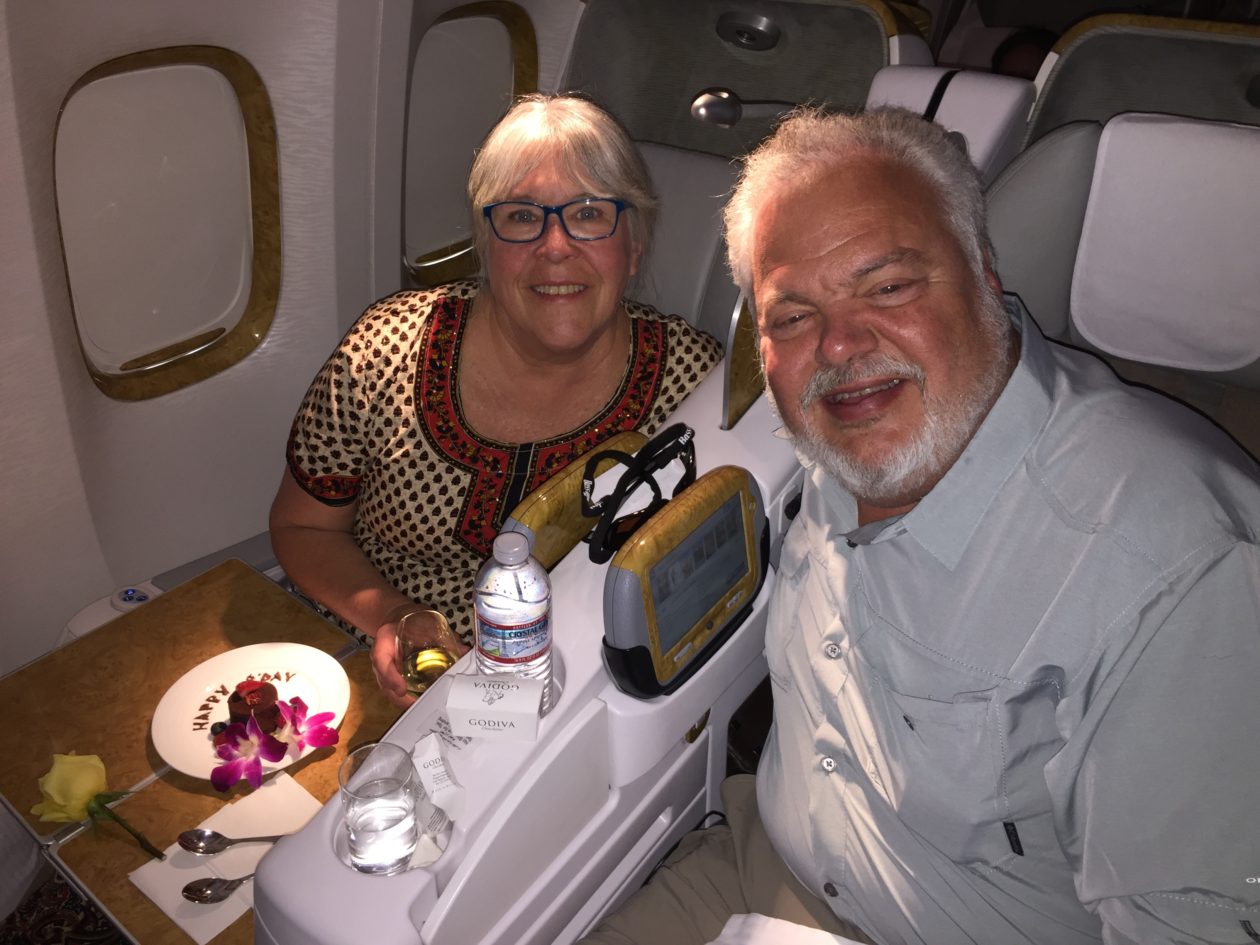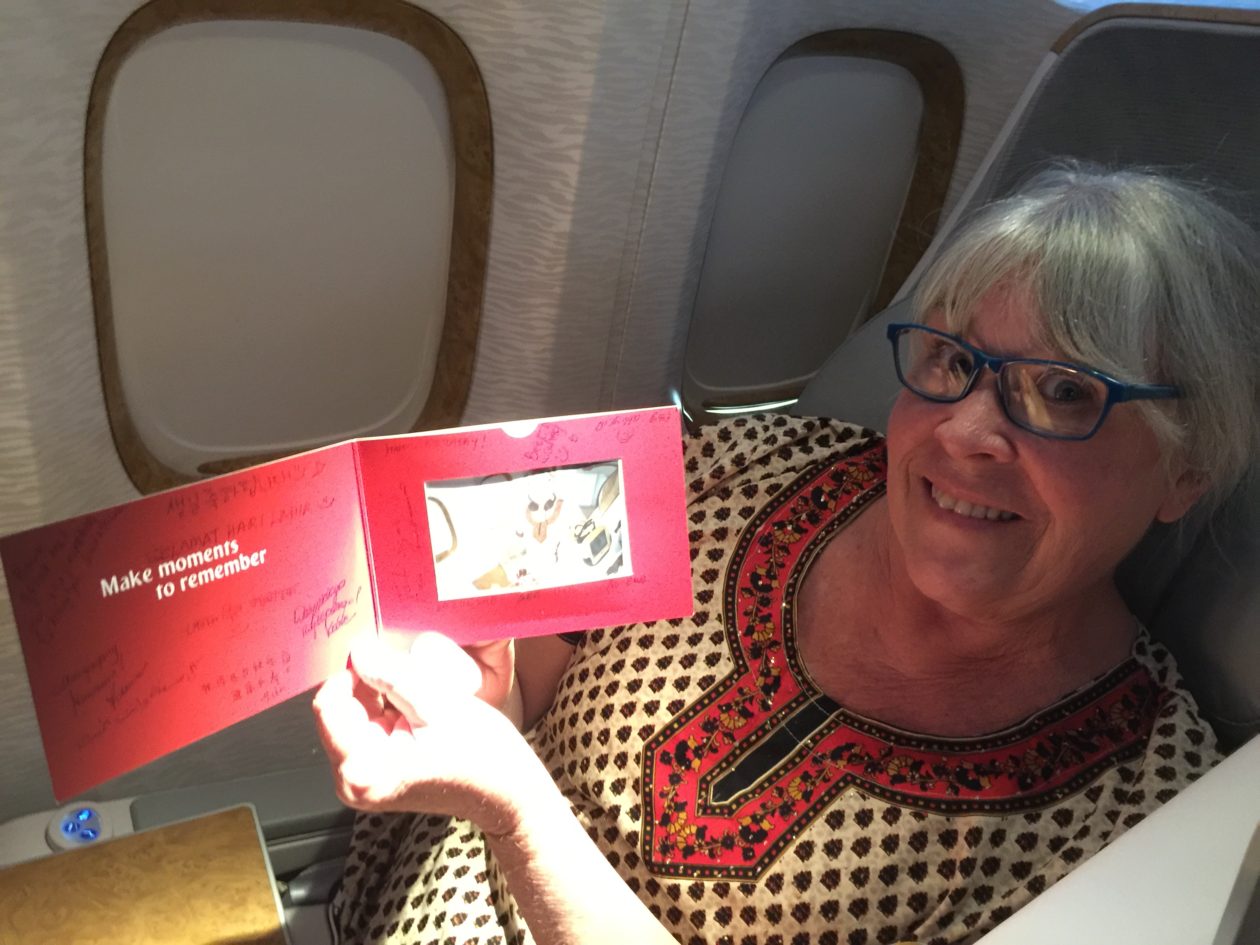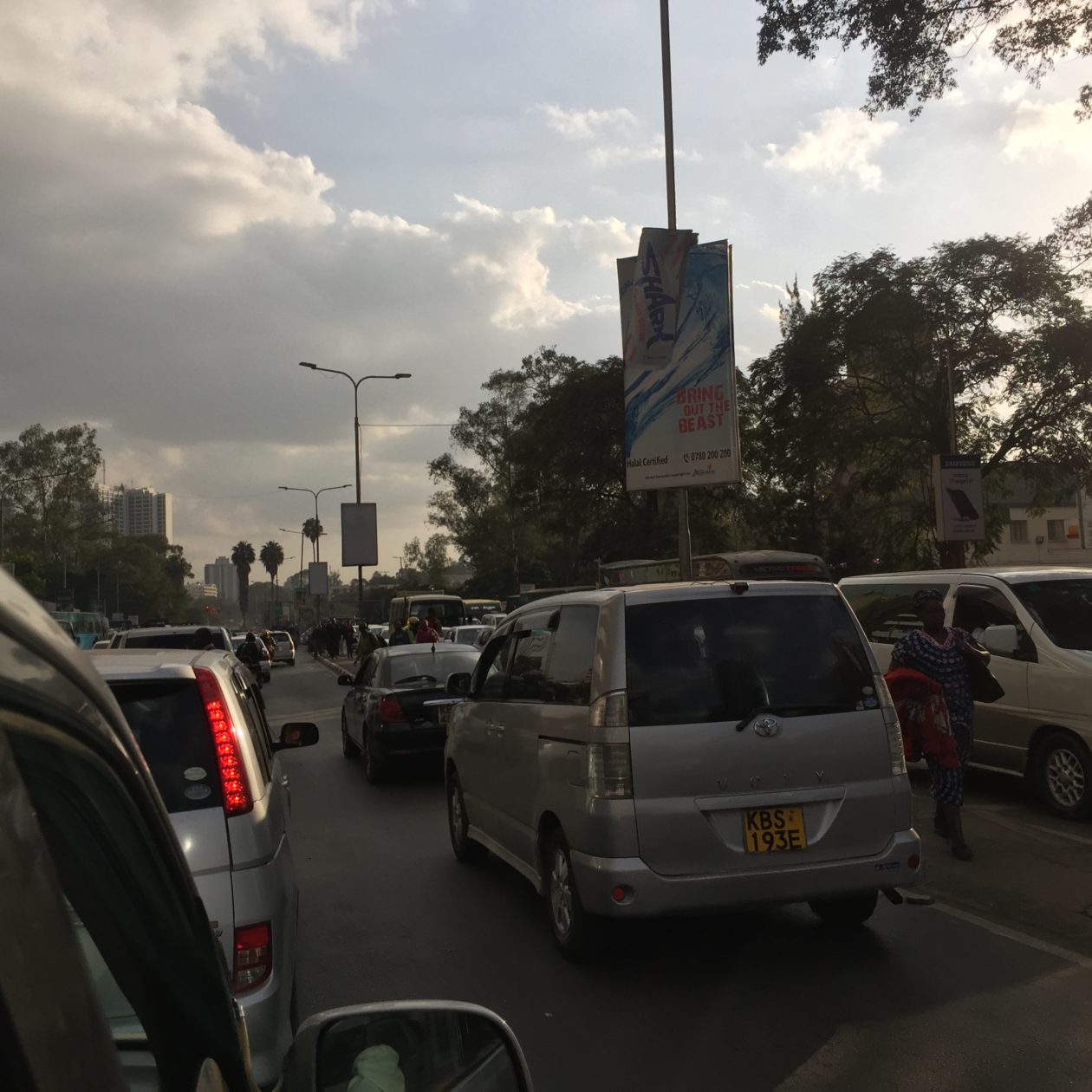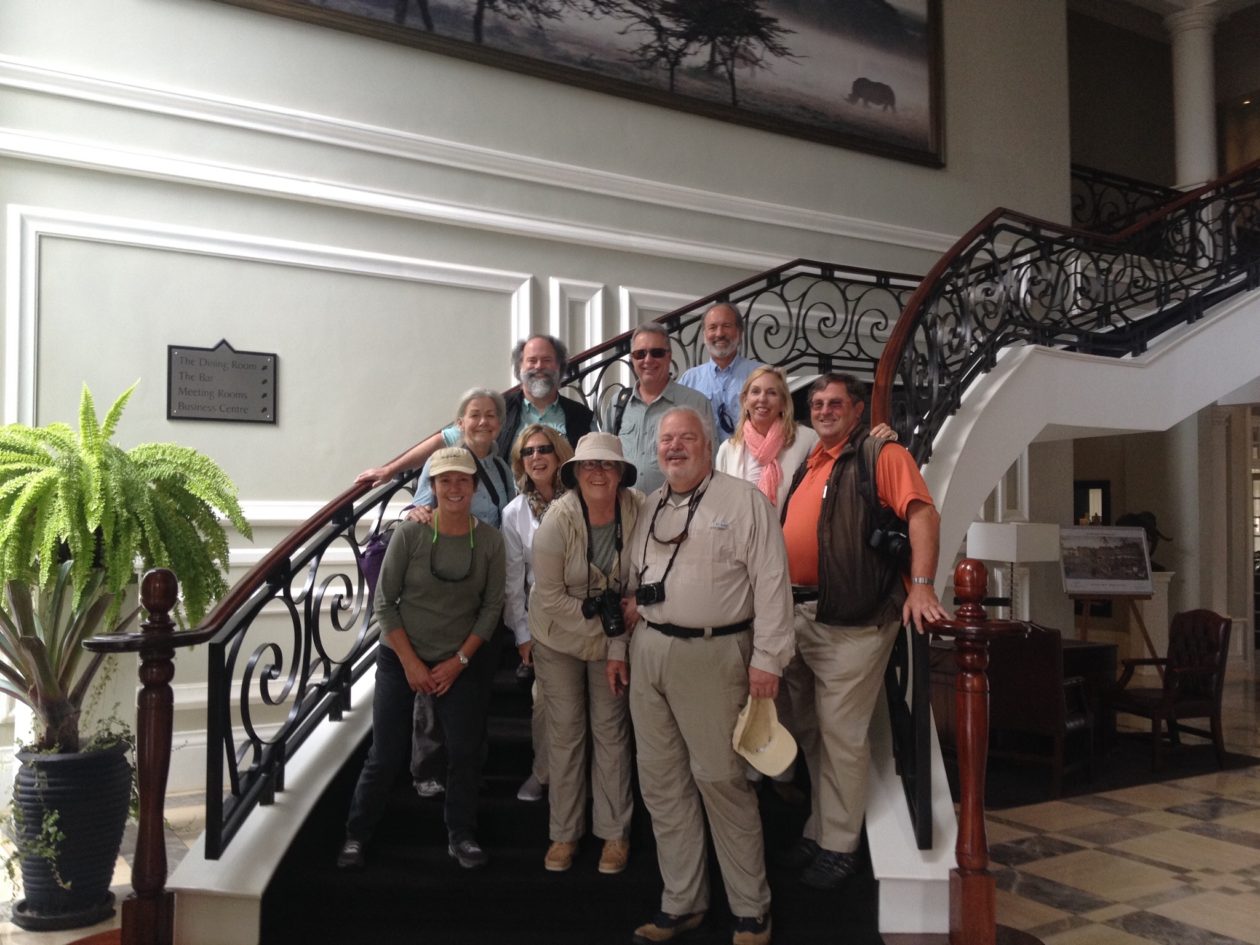Well, we are off on our next adventure. This time we are going on safari for three weeks in Kenya and Tanzania, along with five other couples. After a long, but wonderful flight (they celebrated Deb’s birthday inflight!) from Seattle (via Dubai), we have landed in Nairobi, the capital and largest city in Kenya. Nairobi actually is a Masai phrase that means “cool water.” Well, I guess everything is relative. I tend to think about it in terms of its historical roots — a swamp that was filled in to be a supply depot for the Uganda Railway. Even though it is winter here and the temperatures are cool (low 70s during the day and low 50s at night), it is very humid.
Nairobi is a very sprawling city and they are in the midst of a growth spurt. This is somewhat bittersweet in that while the economy is booming, the disparity between rich and poor is staggering (in a city of 4.5 million, over 800,000 people live in what is be of the largest shanty slums in the world). And with this growth and the massive increase in the number of cars on the road, almost no new roads have been built. Hence, there is gridlock (while taking a city tour, it took almost an hour to go a couple of hundred hours). To somewhat offset these woes, Nairobi has a National Park within its borders. I believe this is the only world capital with a game preserve inside it’s city limits! The park is very close to Hemingway’s, a classic old plantation-style hotel where we stayed for two nights. Many of the rooms/suites are named after the movie stars, authors, and conservationists that stayed there. The whole environment really conjures up the old colonial 1920s “safari chic”. Not exactly roughing it — at least so far!
One of the great things about Nairobi is all the efforts that are being undertaken to protect and restore endangered species. Today, we got to experience two examples of that. In the first case, the Giraffe Center protects the highly endangered Rothschild’s giraffe. Here we got to feed some of the giraffes from a raised platform and receive some really sloppy kisses while mouth feeding them. This is a real success story. When the Center opened in 1979, there around 120 of these magnificent creatures left in existence. Today there are over 300 and they are being successfully reintroduced into a number of regional national parks. In addition to the giraffes, the Center also protects warthogs and a number of bird species (at the adjacent Gogo River Bird Sanctuary).
The second amazing preservation story takes place at the David Sheldrick Wildlife Trust (named after an anti-poaching game warden). Started in 1977, here the success story is about orphaned baby elephants and black rhinos. The handlers march a group of baby elephants in and bottle feed them. Once they have had their fill, the babies romp around the area and come right up to you. Deb keeps saying she wants to bring one back to San Juan Island. I’m not sure how our dog (Sadie) would feel about that. Having said that, we already have a camel on the island — so who knows?! You also get to see some of the baby black rhinos. The other thing that is great at both these locations is their education programs. We were surrounded by school kids in both places. Given the new emphasis on conservation, getting the kids aware and engaged early is really important. It is really inspiring to see the good work being done here.
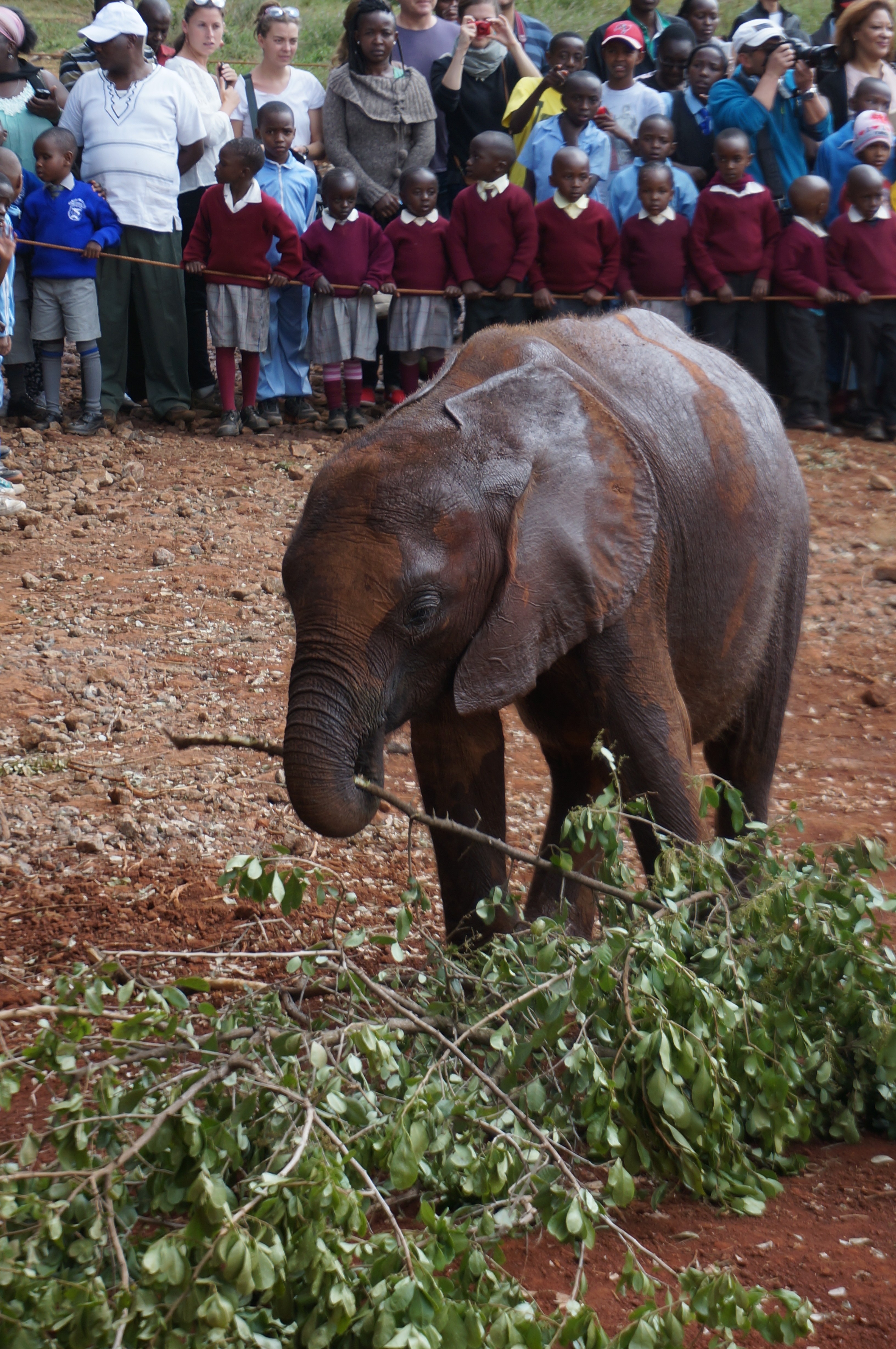
Tomorrow, we catch our first hop to Amboseli National Park. The draw here are the hundreds of big-tusked elephants, seen against the backdrop of Mt. Kilimanjaro. Hopefully, the weather will be clear so we can fully appreciate the beauty!
This entry was posted in Africa, Kenya, Travel
